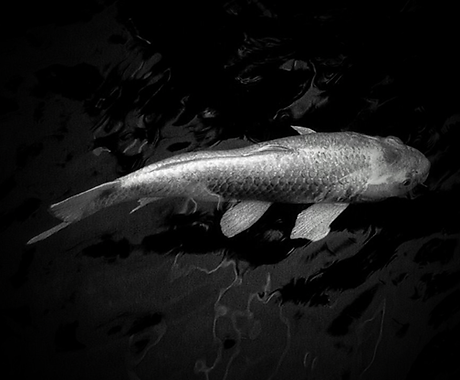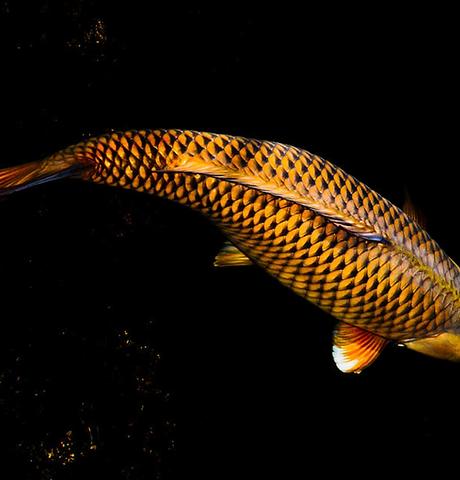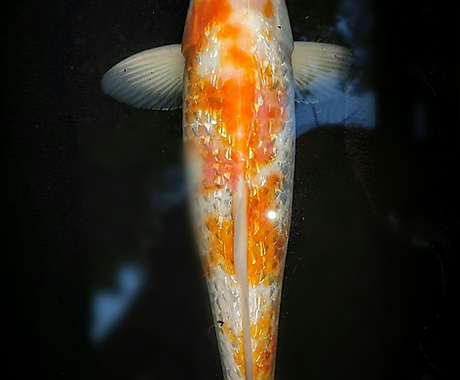Koi Varieties and Identification
Everything You REALLY need to know
Here at Diamond Koi we won't try to confuse you with all those hard to pronounce technical words. We'll Provide you with the basics, and easiest way to understand color differations.

Kokaku
the oldest and most well known variety of koi, have a solid white base with patterns of red overlaid on top of the white. Top quality Kohaku display a bright, blemish-free white combined with deep, vibrant red tones. The even distribution of the pattern along the body is also very important.

Sanke
koi with a solid white base overlaid by patterns of both red and black. It is commonly said that a high quality Sanke pattern begins with a great Kohaku pattern, to which the black is a welcome complement.

Showa
Showa Sanshoku, more commonly known as Showa, are koi that display white and red/orange patterns over top of a black base color. Showa can be easily confused with Sanke. In Showa, the black patterns will wrap all the way around the body, instead of appearing only on the top half of the body. Also, Showa will have black patterns on the head, and Sanke will not.
The red, white and black should be balanced about the body evenly, with crisp, clean edges between each color.

Tancho
Tancho is a hugely popular variation of Kohaku, in which the only red pattern appears as a single red dot on the head. The symmetry and placement of the Tancho mark are main factors in determining the quality of any particular koi. Tancho are highly regarded in the Japanese koi industry for their resemblance to the Grus japonensis, or Red-Crowned Crane.
Although the Tancho mark can appear in many varieties of koi, the word “Tancho” by itself is almost always used to refer to Tancho Kohaku.

Utsuri
Utsuri will combine clean w/r/y patterns with a deep, lacquer-like black. A split head of both black and w/r/y is also an important requirement for top quality specimen.
Shiro Utsuri are koi with a black base overlain by areas of white.
Hi Utsuri are alike, but with a redish/orange base instead of a white.
Ki Utsuri are also alike, but have a deeper yellow base tone.

Asagio
koi that display a blue net-like pattern on the back, complemented by red or orange on the belly, gill plates, fins and body. The red or orange pattern will develop up from the bottom of the body as the koi ages. Top quality Asagi have a red pattern that does not extend above the lateral line.

Soragoi
, similar to Chagoi, are koi of a solid grey or silver color, combined with a subtle net pattern. Also like Chagoi, mature Soragoi are very docile and will be among the first koi in your pond to learn to hand feed.

Chagoi
are solid colored brown or bronze koi with a subtle reticulated net pattern. Although they are not nearly as flashy or colorful as other types of koi, Chagoi are still a welcome addition to koi ponds. Because of their close genetic relationship with wild carp, Chagoi are some of the friendliest and most docile koi available. This makes them the easiest to train to hand feed, and other varieties of koi may follow suit when they see a Chagoi hand feeding.

Kikusui
Although technically they are the Doitsu version of Hariwake, scaleless white koi with patterns of orange or yellow are commonly referred to as Kikusui. The bright, metallic colors of Hariwake are also present in Kikusui.